The Ultimate Undead Read online
The Ultimate Undead
Byron Preiss, Editor
John Gregory Betancourt, Editor
iBooks
Habent Sua Fata Libelli
* * *
iBooks
1230 Park Avenue
New York, New York 10128
Tel: 212-427-7139
[email protected] • www.ibooksinc.com
All rights reserved under the International and Pan-American Copyright Conventions.
Printed in the United States by J. Boylston & Company, Publishers, New York.
No part of this publication may be reproduced, stored in a retrieval system, or transmitted in any form or by any means, electronic, or otherwise, without the prior written permission of the copyright holder. The iBooks colophon is a trademark of
J. Boylston & Company, Publishers.
Library of Congress Cataloging-in-Publication Data
Preiss, Byron, Editor
Betancourt, John Gregory, Editor
p. cm.
1. Fiction: Horror - General 2. Fiction: Occult & Supernatural
3. Fiction: Fantasy - Short Stories
Fiction, I. Title.
ISBN: 978-1-59687-389-6, Trade Paper
Copyright © 1993 by Byron Preiss Visual Publications
September 2013
* * *
Credits
Illustrations ©1993 by Michael David Biegel
Special thanks to Leigh Grossman, Jeanne Cavelos, and Leslie Schnur
“Introduction” ©1993 by Dennis Etchison
“Though I Walk Through the Valley” ©1993 by Somtow Sucharitkul
“The Doctor” from the Witching Hour by Anne Rice ©1990 by Anne O’Brien Rice. Reprinted by permission from Alfred A. Knopf, Inc.
“Dead Right” ©1993 by Geoffrey A. Landis
“Passengers” ©1993 by Agberg, Ltd.
“Bringing the Family” ©1993 by Kevin J. Anderson
“Restoration Comedy” ©1993 by Chelsea Quinn Yarbro
“Corporate Takeover” ©1993 by M. J. Costello
“Emma’a Daughter” ©1988 by Alan Rodgers
“Larger Than Life” ©1993 by Lawrence Watt-Evans
“The Potable Zombie” ©1993 by Larry Tritten
“Not All the Gay Pageants” ©1993 by Brunner Fact & Fiction, Ltd. The author asserts his moral right to be regarded as the creator of this work.
“Z is for Zombie” (A section of “From A to Z, in the Chocolate Alphabet” by Harlan Ellison ©1976 by Harlan Ellison. Reprinted by permission of and by arrangement with the Author and the Author’s agent, Richard Curtis Associates, Inc., New York. All rights reserved.
“Corruption in Office” ©1993 by Don D’Ammassa
“The Toddler Pit” ©1993 by A. R. Morlan
“Red Angels” ©1993 by Karen Haber
“Surprise” by Rick Hautala
“This One’ll Kill You” ©1993 by Brian Hodge and William Relling Jr.
“House of Lazarus” ©1993 by Francis A. McMahan
“Woken with a Kiss” ©1993 by D. F. Lewis
“The Front Room” ©1993 by D. F. Lewis
“The Silent Majority” ©1993 by Robert Weinberg
“The Dead Speaketh Not, They Just Grunt Now and Then” ©1993 by Lionel Fenn
“The Other Dead Man” ©1988 by Gene Wolfe; first appeared in Weird Tales; reprinted by permission of the Author and the Author’s agent, Virgina Kidd.
“The Third Dead Body” ©1993 by Nina Kiriki Hoffman
* * *
“It's a Cherokee Rose. The story is that when American soldiers were moving Indians off their land on the Trail of Tears, the Cherokee mothers were grieving and crying so much 'cause they were losing their little ones along the way from exposure and disease and starvation. A lot of them just disappeared. So the elders, they said a prayer; asked for a sign to uplift the mothers' spirits, give them strength and hope. The next day this rose started to grow where the mothers' tears fell. I'm not fool enough to think there's any flowers blooming for my brother. But I believe this one bloomed for your little girl.”
—Daryl Dixon (Norman Reedus), The Walking Dead, 2011 The Cherokee Rose
* * *
CONTENTS
INTRODUCTION: LIVING WITH DEATH
DENNIS ETCHISON
THOUGH I WALK THROUGH THE VALLEY
S. P. SOMTOW
THE DOCTOR
ANNE RICE
DEAD RIGHT
GEOFFREY A. LANDIS
PASSENGERS
ROBERT SILVERBERG
BRINGING THE FAMILY
KEVIN J. ANDERSON
RESTORATION COMEDY
CHELSEA QUINN YARBRO
CORPORATE TAKEOVER
MATTHEW J. COSTELLO
EMMA’S DAUGHTER
ALAN RODGERS
LARGER THAN LIFE
LAWRENCE WATT-EVANS
THE POTABLE ZOMBIE
LARRY TRITTEN
NOT ALL THE GAY PAGEANTS
JOHN BRUNNER
Z IS FOR ZOMBIE
HARLAN ELLISON
CORRUPTION IN OFFICE
DON D’AMMASSA
THE TODDLER PIT
A. R. MORLAN
RED ANGELS
KAREN HABER
SURPRISE
RICK HAUTALA
THIS ONE’LL KILL YOU
BRIAN HODGE AND WILLIAM RELLING JR.
HOUSE OF LAZARUS
FRANCES A. MCMAHAN
TWO VIGNETTES
D. F. LEWIS
THE SILENT MAJORITY
ROBERT WEINBERG
THE DEAD SPEAKETH NOT, THEY JUST GRUNT NOW AND THEN
LIONEL FENN
THE OTHER DEAD MAN
GENE WOLFE
THE THIRD DEAD BODY
NINA KIRIKI HOFFMAN
BIOGRAPHIES
INTRODUCTION:
LIVING WITH DEATH
DENNIS ETCHISON
HORROR writers spend a lot of time thinking about fear—what it is, where it comes from, what it means. In other people such a preoccupation might indicate an unhealthy, morbid personality, or a level of anxiety that cries out for professional help. But if you make your living writing horror stories, this kind of thinking is a normal part of your daily life, and represents nothing more than job-related research.
I write horror stories. That means I worry about shadows in doorways, the rustling on the roof, voices in the walls and the darkness under the bed. I am compelled to do this out of professional necessity rather than any perverse interest. It is my job to worry, and to wonder why, and to try to understand the mechanism behind the feeling so that I may use it to trigger a similar sense of unease in my readers, whose reactions are crucial to my success or failure.
It is not enough to say, This frightens me. That does not necessarily mean it will frighten you, as well. It would be arrogant to assume that my experiences and responses are universal. The emotions, yes; we do have a common ancestry and a nervous system that reflects our shared evolution. But the associations, the specifics, are never quite the same. If we were all identically conditioned, we could be relied upon to buy the same product, vote for the same candidate, embrace war or peace or jump off cliffs like lemmings at a given signal. Were it so simple—if so absolute a link between stimulus and response could be isolated—then there would be no further need for competition in the marketplace, or for democracy.
And yet there are archetypes. Certain primal images survive, at least in our time and culture. If it were not so, my job would be hopeless. It is my task to find those archetypes and utilize them to create suspense, terror and catharsis.
So I think about fear, its nature and origins.
And when I do, I think about my childhood.
<
br /> It was not a particularly fearful time, as far as I can remember. The summers were long, the playing went on for hours, and there were always hot meals and the kind faces of my parents and grandmothers and aunts and uncles waiting for me inside the house. It all tends to blur together in a seamless memory of warmth and reassurance that exists outside of time in a place I call the Bradbury Dimension.
But Bradbury also wrote a great many horror stories about that place, at least in the early years of his career, when the memories were fresh and not yet tinged with a golden glow, like a vision of paradise slipping away with the setting sun.
And sometimes, in those moments late at night when I am about to slip away into a dream of my own, it comes back to me:
The way it really was.
Those times may not have been filled with dread, but there was an undercurrent of anxiety as real as a heartbeat that never stopped, not even in sleep. It was born of childhood uncertainties about the meaning of things that grown-ups already understood but would not tell, and what was expected of me, what I was supposed to do until I had the knowledge I needed to act on my own, without being told. There were lessons I ought to be learning on the way, but the explanations I received were tantalizingly incomplete, an instruction manual given out one chapter at a time with no answer page at the back of the book. So the anxiety took shape as dreams, nightmares of pursuit by monsters, one of which I still find it hard to talk about without a shudder and the sound of my own blood pulsing in my ears.
It had many faces.
One was Frankenstein.
The next was Dracula….
When my father took me to a double bill of movies featuring both characters, they appeared more real than any others I had seen on the screen, and strangely, hauntingly familiar, like the figures one is most afraid to meet in dreams.
Since then they have become even more familiar, icons of popular culture. I have seen them portrayed in many other films—too many—and I must admit that, for me, the years have somewhat dimmed their mythic power.
I have made it my business to understand such myths. I know now that Frankenstein was Mary Shelley’s cautionary talk about human pride, written at a time when scientific reductionism and the industrial revolution were about to reshape Western civilization, and based on the fable of Prometheus, who stole fire from the gods. The Monster’s vengeance is the retribution that will come if we dare to see ourselves as gods and assume dominion over life and death.
And Dracula? The vampire has its origins in Jewish tradition as well as the Biblical account of Genesis, and draws from Goethe, Coleridge, Le Fanu and the Romanian stories of nosferatu and the historical Vlad the Impaler. Bram Stoker’s version was about repressed sexuality in Victorian England, and a metaphor for the fear of disease caused by seduction and the unleashing of the libido.
So I no longer dream of Frankenstein’s Monster and Dracula, despite the occasional frisson when a modern writer or filmmaker manages to inject new blood into a revisionist retelling of the stories. And though these symbols have lost their edge for me, the originals do retain some of their cultural potency; otherwise they would not continue to be re-examined. I sense an ongoing process at work every time I see the rubber-fanged Count Chocula and the cute, cuddly Frankenberry on the breakfast cereal shelf or Saturday morning cartoon shows. In their pure form, these characters still have a vestige of their old power to disturb and frighten. Were it not so, they would have been forgotten long ago, their demystification complete.
There is, however, another face of the monster that I cannot so easily dismiss.
Can you guess its name?
Zombies are a relatively new addition to the pantheon of horror archetypes. Unlike vampires and the Frankenstein Monster, their story does not derive from a classic novel. Though legends about the living dead have long been a part of folklore the world over, and may have a factual basis in Haitian voodoo, almost all of what we know about them comes from movies. The fad started in 1932 with the film White Zombie, followed by a great many fast-and-cheap successors, one of which was a masterpiece of style and atmosphere: I Walked with a Zombie (1943).
I was too young to have seen these in theaters, but when they began to show up on television in the early fifties, they left their mark. The ones I remember most vividly starred Bela Lugosi (the Count himself), and Mantan Moreland usually seemed to be somewhere close by, his eyes bugging out and his chauffeur’s cap pushed back nervously to reveal a brow beaded with cold sweat. The central image was invariably the army of the undead—plantation workers, laborers, nameless minions of the night—shambling ever forward in an unstoppable wave, oblivious to any opposition and without concern for their own lives, which were already forfeited. Nothing could deter them, their gray, unseeing eyes staring blindly ahead, mindless legions in the service of another master….
Later they might appear as servants of an alien race (Invaders from Mars, Enemy from Space) or sinister copies of the people next door (Invasion of the Body Snatchers), but they were always easy to spot by their vacant, unfocused eyes, their imperviousness to pain, in fact their total lack of feeling. They were Bad News. You couldn’t outwit them because they had no strategy other than relentless brute strength and the force of numbers; neither could you hope to reason with them or plead for mercy because they had no capacity for emotion. They were beyond caring, beyond humanity, beyond the last borderline that separates life from death.
And that was what was most frightening. Frankenstein’s Monster was ultimately a pathetic creature, a product of man’s hubris and more to be pitied than feared; Dracula was a deformed, almost tragic soul doomed to wander the Earth in search of nourishment to sustain the curse of immortality. But zombies lacked any trace of elegance or dignity. They were caricatures of human beings, moving with no purpose of their own and toward no reward save oblivion. Like the seven-foot police officers in George Lucas’s THX 1138, who were incapable of being swayed from their course by reasons or even bribery because they were not men but robots, zombies resembled automatons more than flesh and blood. They were Philip K. Dick’s simulacra, which were in turn a science-fiction metaphor for those brain-dead entities we encounter from time to time who are really only pretending to be our friends or lovers.
It does not much comfort me to know that psychologists now term such individuals schizoid because they lack normal “affect” and do not respond in appropriately human fashion, or that The Serpent and the Rainbow has offered a quasi-medical explanation of zombieism. Their numbers only seem to be increasing, encouraged by the need to feed our war machine, just as they fed the factory production line, where men and women and children were treated as interchangeable parts to meet the needs of industry.
This monster still walks in my dreams and in my stories (cf. “The Late Shift” and “The Blood Kiss,” to name two), just as it continues to proliferate on movie screens, with no end in sight. If George Romero’s Night of the Living Dead (adding a new twist, borrowed from Richard Matheson’s vampire novel I am Legend, to make them flesh-eaters bent on spreading their infection) was a bitter comment on Vietnam and the futility of human intelligence in the face of an insatiable war, his sequels were even darker. Dawn of the Dead presented a blackly comic picture of America as a nation of classically-conditioned sleepwalkers who will go on shopping and consuming long after those habits have lost any meaning; and Day of the Dead imagined what might happen when the zombies finally take over, with the few remaining humans left to fend for themselves against the hordes while attempting to co-exist between the military-industrial complex and pure science. And whether the humans’ apparent escape at the end was only one more manifestation of a desperate dream or the beginnings of a new Garden of Eden, I am not at all sure. Vlad was a real tyrant who skewered his enemies on poles; he died centuries ago; and Frankenstein was only a morality play. But my latest dreams, I am afraid, may be the waking nightmares of a generation pressed inexorably toward absorption by the masses of the walkin
g dead in a society of debased pluralism. It may be no mere coincidence that I worry as I do, and cannot get this newest monster out of my mind. For the handwriting is on the wall. The zombie has not gone away, and will not. He is us.
THOUGH I WALK THROUGH THE VALLEY
S. P. SOMOTOW
UNCLE Will never meant no harm. Dude, he was down. Last Christmas he gave me a Super Nintendo and a dirt bike. Once a month or so we’d like get drunk and stoned and shit. When my brother was gunned down in a drive-by, he took me down to Hollywood after the funeral and bought me a big old chocolate sundae, and he told me I could come and live with him if I wanted to. And I’m all, “Thanks, but like I don’t want to hurt Mom’s feelings even if she don’t got no feelings since she became a junkie.”
He’s all, “I hear you, but don’t be such a stranger anymore. I only live two floors down. I like you, Oz. You really have your head screwed on straight for a kid who’s had so much shit happen to him in his life. So maybe you can do me a favor, talk some sense into Little Ferdie; he’s so fucking stubborn.”
That’s how I come to see a lot more of my cousin Ferdie, and how I found out that Uncle Will was a child abuser.
Cousin Ferdie was twelve like me but he was totally skinny with big bulging eyes like a hunger poster. When I started hanging out at Uncle Will’s apartment after school, or when I would ditch, I didn’t see much of him. His door’d be closed and there wasn’t no reason for me to go in and see him and maybe he wasn’t even home, maybe he was like out cruising with his own friends somewheres. I didn’t like Ferdie. He was so quiet he made you nervous, and when he would say something it would be like sudden, out of nowhere, something that had nothing to do with anything … like when my grandmother would do her speaking-in-tongues thing in church.

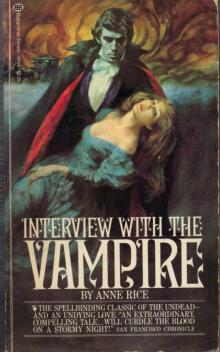 Interview with the Vampire
Interview with the Vampire Christ the Lord: Out of Egypt
Christ the Lord: Out of Egypt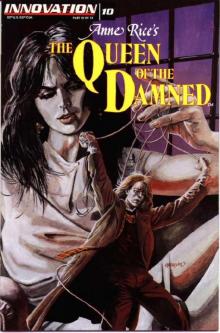 The Queen Of The Damned
The Queen Of The Damned The Claiming of Sleeping Beauty
The Claiming of Sleeping Beauty Prince Lestat
Prince Lestat The Master of Rampling Gate
The Master of Rampling Gate The Vampire Lestat
The Vampire Lestat Blood Canticle
Blood Canticle Beauty's Release
Beauty's Release Pandora
Pandora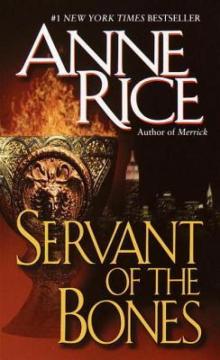 Servant of the Bones
Servant of the Bones Of Love and Evil
Of Love and Evil Beauty's Punishment
Beauty's Punishment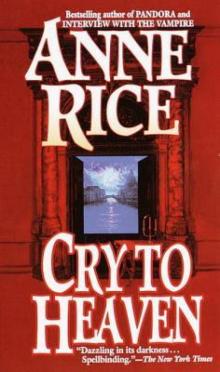 Cry to Heaven
Cry to Heaven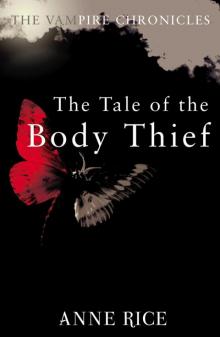 The Tale of the Body Thief
The Tale of the Body Thief The Witching Hour
The Witching Hour Memnoch the Devil
Memnoch the Devil Blackwood Farm
Blackwood Farm Beauty's Kingdom
Beauty's Kingdom Belinda
Belinda Lasher
Lasher Vittorio, the Vampire
Vittorio, the Vampire Angel Time
Angel Time Called Out of Darkness: A Spiritual Confession
Called Out of Darkness: A Spiritual Confession Blood And Gold
Blood And Gold The Passion of Cleopatra
The Passion of Cleopatra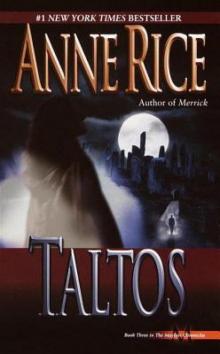 Taltos
Taltos Exit to Eden
Exit to Eden Blood Communion (The Vampire Chronicles #13)
Blood Communion (The Vampire Chronicles #13) The Wolf Gift
The Wolf Gift The Wolves of Midwinter
The Wolves of Midwinter Prince Lestat and the Realms of Atlantis
Prince Lestat and the Realms of Atlantis The Ultimate Undead
The Ultimate Undead The Vampire Lestat tvc-2
The Vampire Lestat tvc-2 The Road to Cana
The Road to Cana Taltos lotmw-3
Taltos lotmw-3 Merrick tvc-7
Merrick tvc-7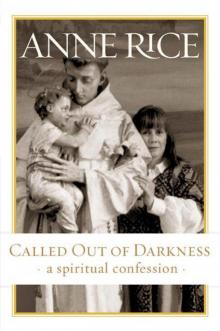 Called Out of Darkness
Called Out of Darkness Pandora - New Vampires 01
Pandora - New Vampires 01 Bllod and Gold
Bllod and Gold The Queen Of the Damned: Vampire Chronicles
The Queen Of the Damned: Vampire Chronicles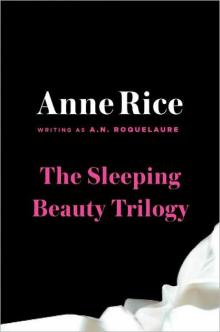 The Sleeping Beauty Trilogy
The Sleeping Beauty Trilogy The Claiming of Sleeping Beauty b-1
The Claiming of Sleeping Beauty b-1 Lasher lotmw-2
Lasher lotmw-2 The Tale of the Body Thief tvc-4
The Tale of the Body Thief tvc-4 The Vampire Chronicles Collection
The Vampire Chronicles Collection Ramses the Damned
Ramses the Damned The Mummy - or Ramses the Damned
The Mummy - or Ramses the Damned Vittorio, The Vampire - New Vampires 02
Vittorio, The Vampire - New Vampires 02 The Vampire Armand tvc-6
The Vampire Armand tvc-6 Queen of the Damned tvc-3
Queen of the Damned tvc-3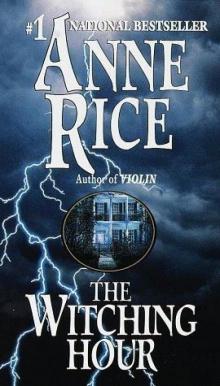 The witching hour lotmw-1
The witching hour lotmw-1 Feast of All Saints
Feast of All Saints Queen of the Damned
Queen of the Damned The Wolves of Midwinter twgc-2
The Wolves of Midwinter twgc-2 The Mummy
The Mummy Blood and Gold tvc-8
Blood and Gold tvc-8 Blood Communion
Blood Communion Interview with the Vampire tvc-1
Interview with the Vampire tvc-1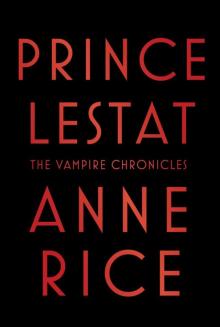 Prince Lestat: The Vampire Chronicles
Prince Lestat: The Vampire Chronicles